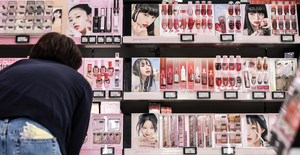The Rise of K-Beauty: Global Trends and Challenges
K-Beauty’s Global Impact
Korean beauty products, deeply rooted in the country’s culture, are experiencing unprecedented global success. The most notable milestone is that K-beauty became the leading cosmetics exporter to the United States in 2024, overtaking France for the first time. This achievement underscores the worldwide demand for innovative skincare and cosmetics that K-beauty offers.
Key Drivers of K-Beauty’s Success
The rise of K-beauty can be attributed to several factors, including localized high-quality products designed with clean formulations that appeal to US consumers. Moreover, the popularity of Korean beauty is fueled by e-commerce, especially through platforms like Amazon, where competitive pricing has heightened demand.
Engaging Through Social Media
Viral marketing on social media platforms like TikTok and Instagram has opened new channels for K-beauty brands, including TikTok Shop. This strategy not only enhances consumer engagement but also promotes product awareness among younger demographics, making K-beauty a cultural phenomenon on digital platforms.
Expansion into U.S. Retail
K-beauty has also made significant inroads into major US retailers, including Sephora, Ulta Beauty, Walmart, and Target. This expansion signifies a growing acceptance and demand for Korean beauty products within mainstream retail, giving consumers greater access to these innovative solutions.
Navigating Regulatory Challenges
To maintain growth, navigating US regulations is crucial. Compliance with the Modernization of Cosmetics Regulation Act is essential for product registration, listing, and labeling. Major beauty companies have established dedicated compliance teams to ensure adherence to these regulations, paving the way for successful market entry.
Economic Considerations and Future Prospects
Despite the positive outlook, looming economic concerns, such as a delayed 25% tariff expected to be implemented alongside existing tariffs, pose challenges. Additionally, fluctuations in the won-dollar exchange rate may affect import prices. Nevertheless, companies like Kolmar Korea and Cosmax are expanding US-based production to mitigate these risks.
Long-Term Innovation Strategies
Looking ahead, K-beauty firms like Amorepacific and LG H&H are increasing investments in the US, with significant capital infusions aimed at establishing advanced facilities. A long-term strategy focusing on technological leadership and product innovation is critical, particularly with a shift towards AI-powered devices and next-generation beauty technologies.
